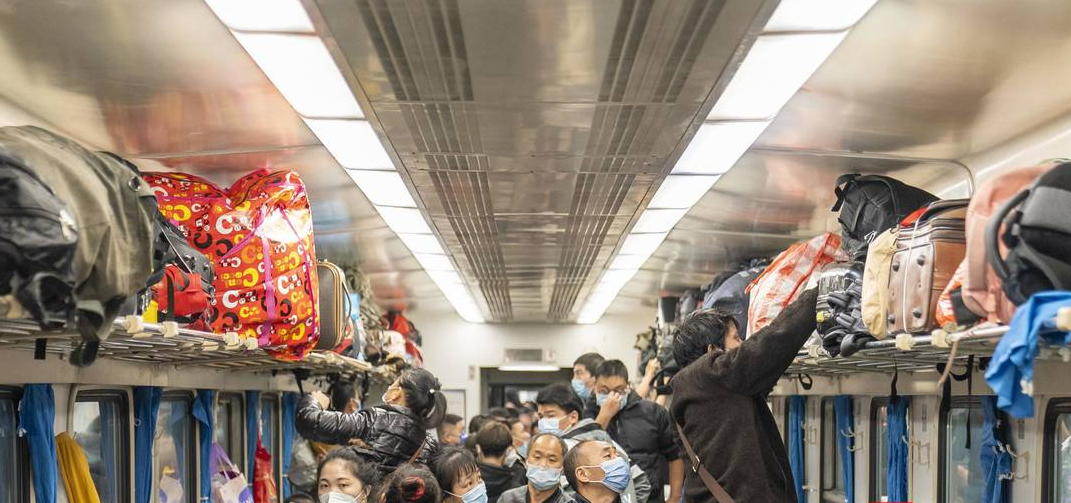
British media: China’s Spring Festival offers spark to ignite economic rebound from epidemic pressure
Train stations in China’s major cities are packed with workers returning home this week as the massive Spring Festival movement reaches its climax. The current Spring Festival scenario is an early sign of China’s economic recovery at a time when the country’s GDP growth rate is experiencing a sharp drop due to the epidemic.
Data released Tuesday showed that after three years of epidemic prevention and control, growth in the world’s second-largest economy slowed in the fourth quarter (2022) and GDP grew 3% for the year. The Chinese economy is bound to benefit from increased spending by the large number of people returning home each day on their way home after optimizing and adjusting epidemic prevention and control measures to make a massive spring migration possible for the first time in nearly three years.
Many analysts say China’s economy will gradually return to normal as the impact of the epidemic wanes, and some believe the Spring Festival will play a welcome early role in boosting consumption. The peak of infection in some major cities has passed,” said Nie Wen, an economist at investment firm Warburg Trust in Shanghai. As the Chinese New Year approaches, Chinese tourism is returning and signs of a consumer recovery are evident.” However, migrant workers are leaving the cities and health experts are worried that a widening and deepening outbreak will affect the elderly rural population. WHO said it will continue to work with China to provide advice and support.
Given that many Chinese urban residents are trying to take advantage of the opportunity to return home to visit their families for the first time since the outbreak, China’s Ministry of Transport expects the total passenger flow during this year’s Spring Festival from Jan. 7 to Feb. 15 to be about 2.095 billion passengers. Before the epidemic, the Spring Festival (in China) was considered the largest annual migration of people in the world. According to Chinese official media, the railroad station in Shanghai is expected to send 390,000 passengers on the 17th day alone.
Some travelers expressed optimism despite the risks associated with traversing the stations. “I’m not worried about the virus. Because we are young, our immunity is quite good,” said Zhou Ning (phonetic), a 37-year-old migrant worker outside the Shanghai train station as he was preparing to return to his hometown in the southwestern province of Bazhong, Sichuan, “In my hometown, many people tested positive, but I am not worried.” On a train leaving Shanghai, migrant worker Feng Hongwei, 21, said he was “happy and excited” as he began the long journey back home to Puyang, Henan province, where “I haven’t seen my parents for two years.
Data show that the Spring Festival has also led to a resurgence in domestic air travel in China, with more than 70,000 passenger flights actually operated on domestic routes during the first week of the Spring Festival, from Jan. 7 to 13. This is equivalent to a recovery to more than 80% of the pre-epidemic level. International routes are also recovering. On Monday, Emirates became the latest airline to announce that it will restart passenger service to and from Shanghai from Dubai.


Average Rating